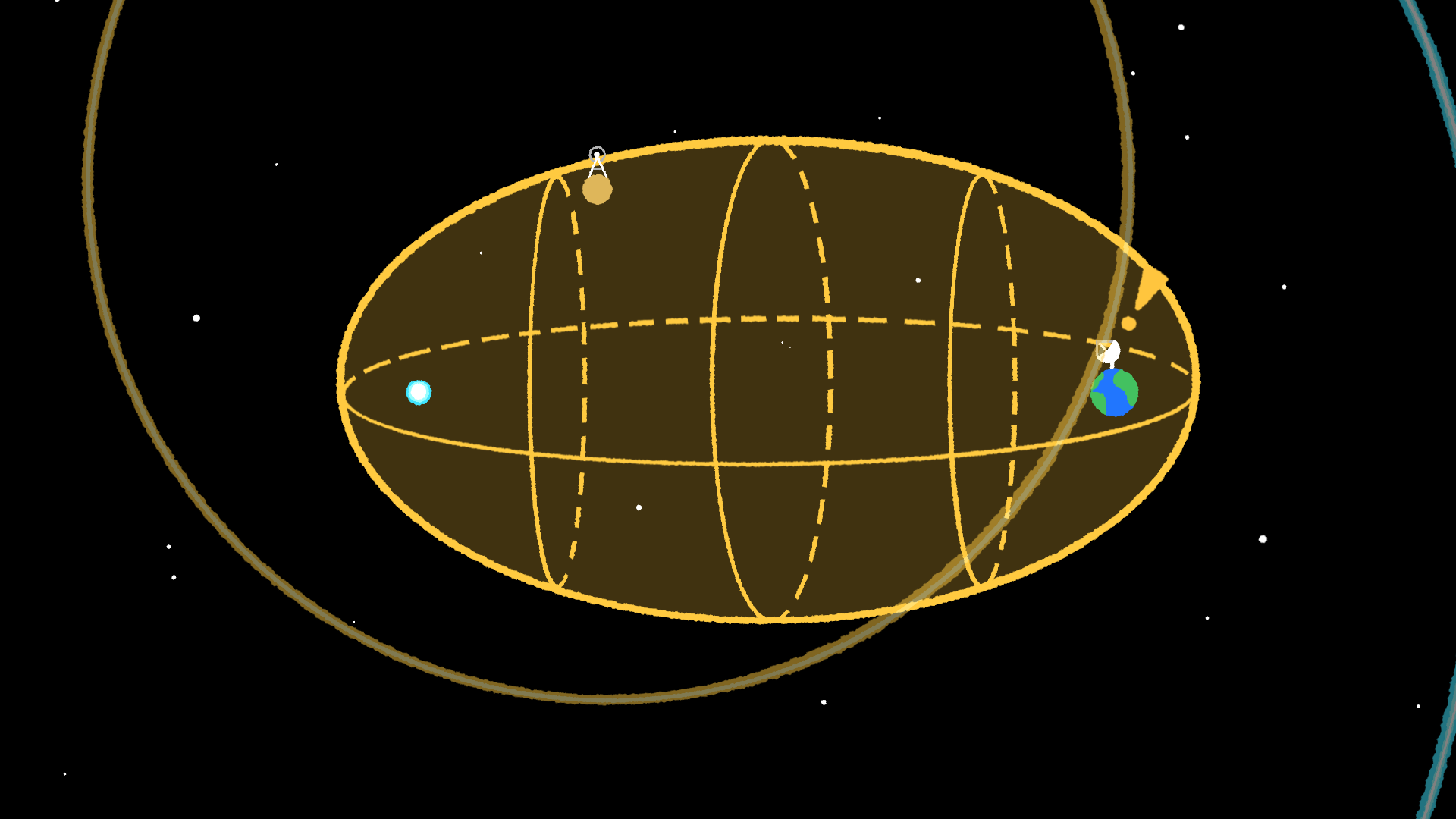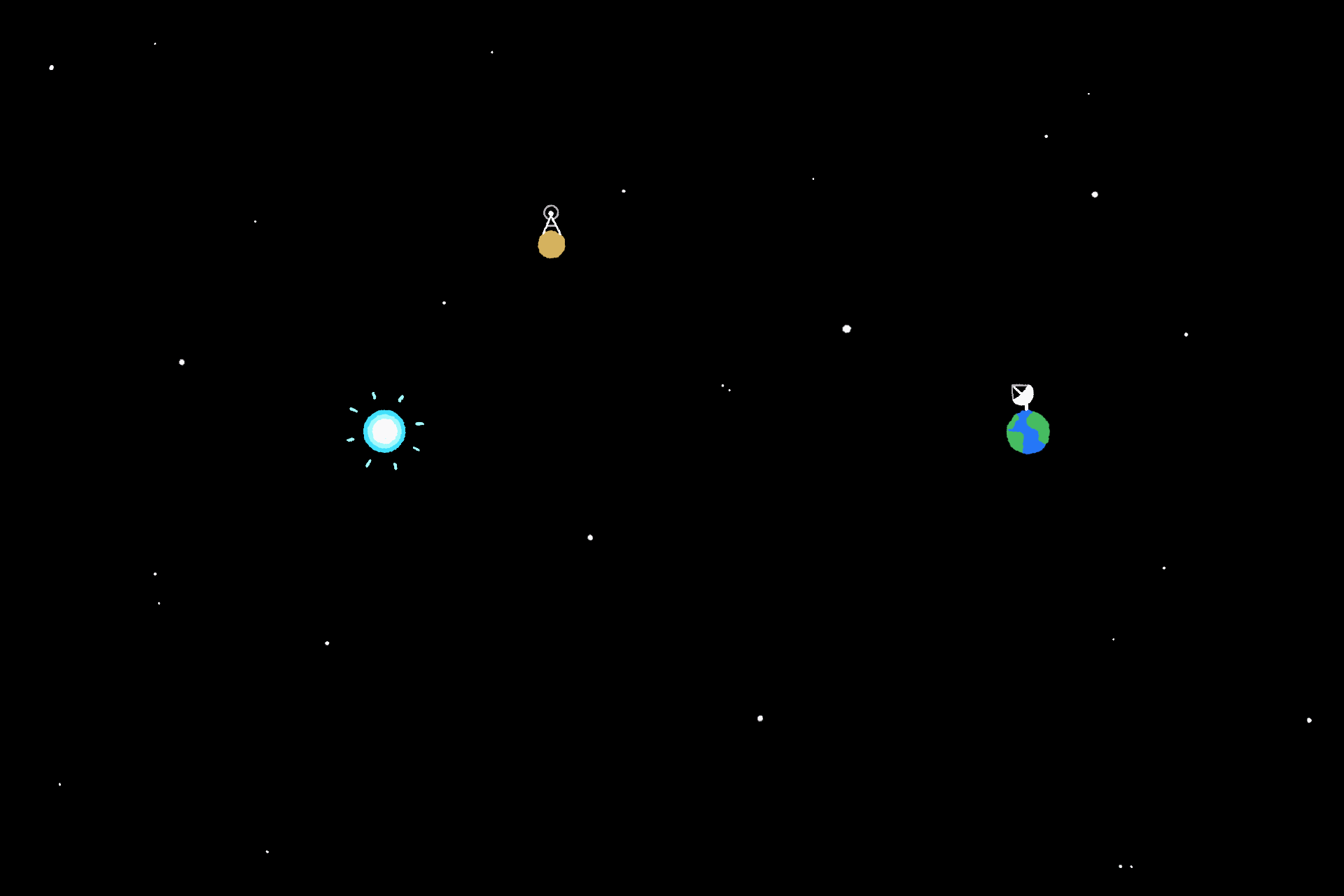
If aliens are synchronizing their signals with light coming from supernova 1987A, then the search for extraterrestrial intelligence (SETI) is on the case. Scientists with the institution say they may be able to find such signals by looking for them on what's called the "SETI Ellipsoid."
About 167,600 years ago, a blue supergiant star exploded as a supernova in the Large Magellanic Cloud, which is a small, satellite galaxy that neighbors our own Milky Way. Light emanating from that supernova raced through space at 299,792,458 meters per second (186,282 miles per second).
Then, on 24 February 1987, it reached Earth.
Related: Machine learning could help track down alien technology. Here's how
The supernova became known as SN 1987A, and its light did not stop at Earth. It kept going, deeper and deeper into our galaxy where other alien life might catch a glimpse. This is where the concept of the SETI Ellipsoid comes from. It's defined as an elliptically shaped volume, with Earth at one foci and SN 1987A at the other; its perimeter indicates locations where there has been enough time for the supernova's light to reach a star, and for any technological life on a planet orbiting that star to send out a signal that would reach us now.
The idea is that we can use the SETI ellipsoid as what's known as a Schelling point, a concept associated with game theory. It describes a kind of focal point around which two protagonists — in this case, transmitting aliens and human astronomers watching or listening for their signals — can coordinate their activities without first communicating their intentions. If that sounds complicated, consider that SETI has been using Schelling points ever since Frank Drake's Project Ozma, the first-ever SETI search that occurred in April and May 1960. Drake had searched for radio signals at the iconic 21 centimeter hydrogen wavelength because he figured aliens would realize our astronomers routinely look at that wavelength. Transmitting on such a commonly used wavelength, he reasoned, would increase the chance of a signal's detection.
"As Dr. Jill Tarter often points out, SETI searches are like looking for a needle in a 9-D haystack," said Sofia Sheikh of the SETI Institute and the University of California, Berkeley in a statement. "Any technique that can help us prioritize where to look, such as the SETI Ellipsoid, could potentially give us a shortcut to the most promising parts of the haystack."

The hope is that technological aliens who have seen SN 1987A would synchronize their signals with it, knowing that we would be looking for it on the SETI Ellipsoid. However, the problem has been that, until very recently, it has been impossible to search the ellipsoid with a reasonable degree of accuracy.
To understand why, let's take a look at some SETI and astronomical history.
The concept of the SETI Ellipsoid is not new. It was first independently described by T. B. Tang in the Journal of the British Interplanetary Society in 1976, and by Soviet astronomer P. V. Makovetskii in 1977. At the time, there were no obvious targets around which to base a SETI Ellipsoid; Makovetskii proposed using Nova Cygni 1975, which was an outburst of a white dwarf accumulating matter from a companion red dwarf star, which prompted the system to brighten substantially for about a week.
After the discovery of SN 1987A, Hungarian astronomer Iván Almár realized it had created a new SETI Ellipsoid subject, and in 1994, Argentinian astronomer Guillermo Lemarchand described a search using that ellipsoid. But, uncertainties in the distances of stars near the ellipsoid's perimeter were too great. Uncertainties in distance correspond to uncertainties in time; if we get the distance to a star wrong by even half a light year, for example, that means our search for synchronized signals would be six months too early or late. And timing may be everything with these technosignature hunts.

Only in the past ten years, with the advent of the European Space Agency's Gaia mission, meant to measure the positions and characteristics of a billion stars, have astronomers started gleaning distances to stars with the required accuracy to search SN 1987A's SETI ellipsoid. So, a team led by James Davenport of the University of Washington in Seattle combined the Gaia data with stars on the SETI Ellipsoid that are in the Continuous Viewing Zone of NASA's Transiting Exoplanet Survey Satellite (TESS).
TESS spends a year looking at each celestial hemisphere, and divides those hemispheres up into sectors. TESS gazes at each sector for 27 days, watching for exoplanetary transits, before moving on to the next sector. However, there's a region around each celestial pole that appears in every sector. This is the Continuous Viewing Zone — TESS gathers data from it for an entire year.
Davenport's team identified 32 stars in the Continuous Viewing Zone that are on the SETI Ellipsoid, and the year's worth of data allowed for some leeway in case of any lingering uncertainty in their distances. TESS, being an optical telescope, can only detect optical signals and not radio messages. Davenport's team studied the light of the 32 stars over the course of that year, looking for any anomalies that indicate a technological signature. These anomalies could include a brightening from a laser signal, an unorthodox transit from an artificial structure, or even an artificial outburst mimicking the light curve of SN 1987A. In 1994, Lemarchand suggested looking for a "fake pulsar" signal, as aliens might know that astronomers would be looking for a pulsar born in the fires of the supernova. (To date, no pulsar has been detected in SN 1987A.)
Suffice to say, Davenport's team found no anomalies and therefore no evidence of aliens was detected. However, the SETI Ellipsoid is always growing (at the speed of light, in fact) and it will move onto other stars in the future.
The upcoming PANOSETI (Panoramic SETI) project, which will continuously observe the entire sky visible from Lick Observatory in California and search for optical and near-infrared laser signals, will be perfect for probing the SETI Ellipsoid. The Vera C. Rubin Observatory in Chile could also be a game changer when it becomes operational later this decade.
"New surveys of the sky provide groundbreaking opportunities to search for technosignatures coordinated with supernovae," co-researcher Bárbara Cabrales of Smith College in the United States, said in the statement.
The analysis of the SETI Ellipsoid and the results from the stars in TESS' Continuous Viewing Zone were described last year in the The Astronomical Journal.







